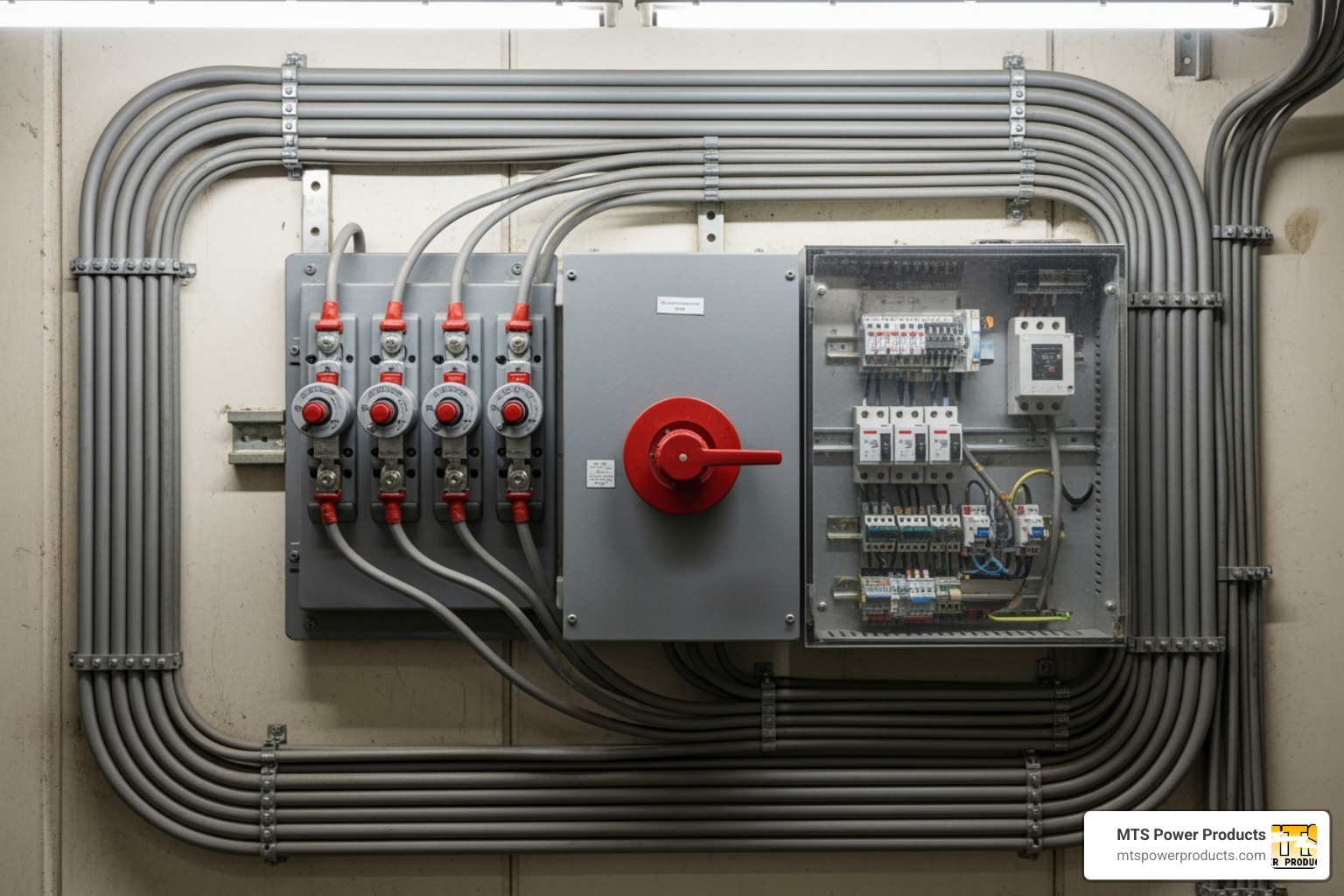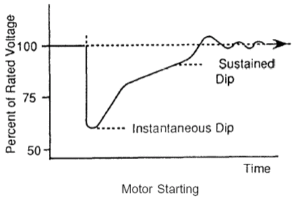
Buy Direct
from the Manufacturer
Sell our Products
Become a Distributor
Discounts
on volume purchases
Visit Us
at our Miami office
from the Manufacturer
Become a Distributor
on volume purchases
at our Miami office
Mcpherson Controls EPMG-1270 / EPMG-2470 Kutai AVR
Do you need improved motor starting performance from your existing self-excited (shunt) generator? This paper introduces a unique method to add PMG-type performance for motor starting to any self-excited (shunt) generator using a battery powered auxiliary excitation boost system.
Separate excitation upgrades improve the motor starting performance of self-excited generators
Executive Summary
Gensets supply power to a mix of motor loads, however, the ability to start relatively large induction motor loads remains a major challenge when working with motors that are large relative to the size of the generator. Sizing a generator for expected motor starting loads is a straightforward calculation that should always be emphasized during the genset ordering process. But what options are when the capacity of an existing genset is already fully utilized? This paper covers three separate excitation upgrades to existing gensets as a novel and affordable solution to this problem.
Background
Starting induction motors can cause difficulties for gensets because of the high in-rush current when started at full voltage. A genset is a limited power source so any increase in current draw results in a voltage dip that can result in an inadequate voltage level to start the motor. Reduced voltage starting methods (soft starters) are often used to reduce outrush currents from the generator but those methods also reduce the current available for starting motors.
With self-excited (or shunt) generators, the voltage drop during motor starting also reduces the input voltage to the generator automatic voltage regulator (“AVR”) by a corresponding amount. The reduction of the input voltage to the AVR reduces the excitation power to force timely recovery of generator terminal voltage, further reducing the ability to start large motor loads. A separate voltage supply to the AVR that is independent and isolated from terminal voltage is an ideal solution to deal with this problem. This paper covers three separate excitation methods available as upgrades to existing units or designs as a separate excitation power source for an AVR:
The Challenge of Loads
Induction motors draw several times the rated full load current of a motor when starting. This is termed locked rotor current or starting kVA (“SkVA”). Starting current is typically six times the rated full-load current and this inrush current stays high until the motor reaches about 75 percent of rated speed. If a motor is started on normal utility power, the high in-rush current will cause only a small voltage dip because the utility is a much larger voltage source than the motor. However, when a motor is started on genset power, the high inrush currents can result in a large voltage dip that can prevent the motor from reaching its operating speed. Kutai AVR

Because of the problems encountered starting motors at full voltage – reduced voltage techniques – also called soft starters – were developed. Reduced Voltage Start Systems are often applied to reduce outrush currents from the generator when starting large motors to reduce the power demand on the generator in the interest of economy. Kutai AVR
Reduced voltage starting systems will reduce the initial start current loading, reducing the power demand on generators, but there are practical limitations to these methods. Whatever reduced voltage technique is used, reducing the starting voltage also reduces the current, which reduces the torque for motor starting. Because of this reduced current, a genset that cannot start a motor at full voltage cannot start the same load at reduced voltage or reduced voltage conditions. Kutai AVR
Motor starting problems with self-excited (shunt) generators
Given their low cost, self–excited (shunt) generators are widely used for power generation. When a generator set is sized properly for the application, they meet most needs. However, when improperly sized, their operation can be subject to variances causing major difficulties. Kutai AVR
Self-excited generators take their input power to the AVR from the generator terminal voltage, so any addition of a load that reduces the terminal voltage will also reduce excitation voltage to the AVR. Because the power to the AVR comes from generator terminal voltage, any significant block loading (like motor starting) will reduce the input voltage to the AVR by the corresponding size of transient voltage dip. This reduction in input voltage to the AVR reduces the ability of the excitation system to force quick recovery of the generator terminal voltage and further impacts the generator ability to start relatively large motor loads. Kutai AVR
Separate Excitation Power Sources
Excitation systems to supply power to the AVR that are independent and isolated from terminal voltage have been developed to improve the response of synchronous generators to heavy transient loads. These include auxiliary winding excitation systems (AUX), harmonic winding type systems (including aux + hybrid systems), Permanent Magnet Generator (PMG) systems, and also Excitation Boost Systems.
Three different separate excitation methods added to existing units and designs using an auxiliary excitation boost system can make an improvement in operating performance. These systems use battery power as a separate excitation power source for the AVR in self-excited generators. However, each option has a distinct footprint and capacity. Kutai AVR
Permanent Magnet Generators (PMG)
This method places a small permanent magnet generator (PMG) at the non-drive end of the alternator that provides electrical power to the AVR. The PMG output is isolated from the disturbances in the generator load and produces power as long as the alternator shaft is turning. The separate power source from PMG systems provides benefits for dealing with the load when starting large motors and also other events in the load circuit:
Provides sustained short circuit (SSC) current during fault conditions which prevent the field from collapsing to allow for downstream faults to clear. Strong voltage build-up on initial start-up instead of relying on residual magnetism. Non-linear loads have no impact on the ability to provide power to AVR However, the benefits from PMG systems come at a cost. PMG excitation systems are relatively expensive and also add length, weight, and complexity to a genset. Aftermarket addition of PMG systems also requires mechanical modification to a genset. Kutai AVR
Excitation Boost Systems (EBS)
Excitation Boost Systems (EBS) were developed to provide “boost” to self-excited generators when large transient loads like a relatively large induction motor are encountered. The construction of generators with Excitation Boost Systems is the same basic design as self-excited systems with the voltage sensing and power input to the AVR coming from main stator winding, but with a small permanent magnet generator added to the genset to provide a “boost” when input voltage to the AVR drops. The excitation boost generator is similar in appearance to a permanent magnet generator (PMG) excitation system but is not rated for continuous power output to the AVR and is intended for shorter output. Kutai AVR
The addition of EBS in the aftermarket requires mechanical modification to the genset, which usually requires it to be taken out of service to be taken to the workshop.
Kutai EPMG-1270 / EPMG-2470 Auxiliary Excitation Booster
While PMG and EBS methods address some of the challenges of motor starting for a self-exciting gensets, they add cost and complexity. The Kutai EPMG system is a unique method of achieving PMG motor starting performance in self-excited generators by using battery power as a separate excitation power source. (The EPMG-1270 is for 12V systems and EPMG-2470 is for 24V systems.)
The EPMG-1270 / EPMG-2460 connects in series with the AVR and can be connected to the genset battery as a power source (or other batteries), and is activated only when voltage terminal drops below by a preset amount (adjustable), thus conserving battery power. Kutai AVR
Features of the EPMG Auxiliary Excitation Booster
Loss of the EPMG will lead to the loss of any increased motor starting capacity when the unit is operating normally, but the generator will not lose excitation to the field winding or generator output. (In some PMG systems, if the PMG fails it is not possible for the AVR to take power from the main stator output and the genset cannot be used until the PMG is taken out of service and repaired.) Kutai AVR
Further information
Three different upgrades to improve the ability of self-excited gensets exist to start relatively large induction motors. Each system has benefits but at very different costs, so this paper is intended to help the operator choose the most cost effective solution. Upgrading an existing genset is often an economic decision to delay or even avoid buying a new unit. Kutai Electronics has designed the EPMG and other upgrades to increase the performance and extend the useful life of existing gensets or designs. Please contact MTS Power Products about any Kutai Electronics products and how EPMG will work with your gensets.
